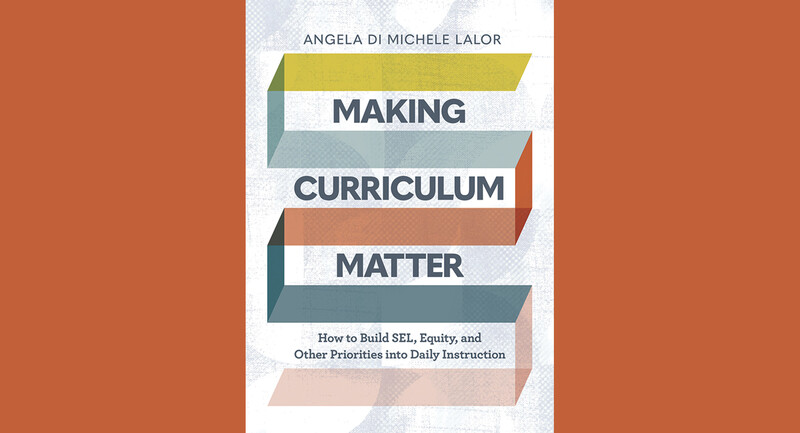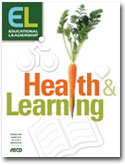January 11, 2022
The Secrets to Motivation: Autonomy, Belonging, Competence, and Meaning
Once teachers see engagement as fluid rather than fixed, they can use four tools to consistently help students find their motivation.
We’ve all been there: That moment when, after we’ve offered directions with great enthusiasm, only a few students begin the task. We wonder, “Why are our students not motivated?”
We teamed up to answer this question while preparing new teachers at Fordham University in New York City. Rhonda, as an experienced P-12 special and general educator, taught courses in differentiated instruction, and Akane, a Fordham professor, taught educational psychology. In our courses, teachers expressed concerns and questions about student motivation. Common misconceptions that motivation is a personality trait and unchangeable made it difficult for teachers to see how all students could be inspired with simple adjustments to tasks and the learning environment. Too often, research and theories on motivation lives in books instead of being operationalized in classrooms. We aimed to take the mystery out of student motivation by helping teachers see how daily teaching practices could be the solution.
We turned to the concrete levers described in Turner’s (2014) motivation framework: autonomy, belonging, competence, and meaning (ABC + M). When students seemed unmotivated, teachers could use the ABC+M framework as a tool to identify the specific feelings students needed to feel more motivated. The teachers also found that thinking about ways to prompt greater student feelings of ABC+M supported their efforts to differentiate instruction. For example, teachers assigned students different types of resources matched to their needs to prompt greater student autonomy when tackling a common grade-level task.
Taking a Closer Look
Let’s try out the ABC+M framework by harnessing our own motivation. To begin, make a list of activities that generally motivate you--for example, playing games, reading, going to the gym, or lesson planning. Start a second list with times when motivation is a struggle, such as doing laundry, exercising at home, studying for a test, or grading. Look over the lists for similarities and differences. Ask yourself, “What do I notice about the activities and environments when I feel motivated versus unmotivated?” You may feel motivated to exercise in a class or with a team but exercising alone was on your unmotivated list. This difference in motivation for the same activity could occur because you feel greater belonging and meaning when you exercise with others.
The ABC+M framework can explain why you feel motivated for some activities (and not others) and how you can change the task or environment to find motivation for any task—which in turn can reveal a lot about how to adjust teaching to support student motivation. If doing laundry or dishes is on your unmotivated list, can you think of ways to increase the meaning by playing music you enjoy or calling a friend while you do this task? Changing the task or the environment to increase feelings of autonomy, belonging, competence, and meaning is the secret to motivation. Let’s take a closer look at each lever.
A Is for Autonomy
As students transition from P-12 settings to college or work, they often feel an incredible increase in feelings of autonomy. Suddenly, they can decide how to fill their daily schedules or choose how and when to complete tasks.
We feel autonomy when we perceive that we can regulate our own goals and actions. Ryan & Deci (2017) have shown that autonomy is an important determinant of intrinsic motivation; students are more likely to be intrinsically motivated when they feel empowered to make decisions in the pursuit of their goals and interests.
Teaching Tip #1: Offer Structured Choice
Teachers promote autonomy by providing students with meaningful choices in pursuit of their learning. In one extreme, teachers assign all aspects of a task, allowing for no flexibility or choice (e.g. complete problems 1-10). On the other extreme, teachers allow total student choice (e.g. choose any book or pick any topic to research). These approaches may lead students to one of two unproductive feelings: having no autonomy or being overwhelmed with options.
A more moderate approach is to offer a selection of curated choices (what we like to call teacher-structured student choice) so that there are no unproductive options. For example, teachers may select three or four books at a specific independent reading level that share a common topic or context and place the books in topic/level baskets. Then, teachers can assign students to choose a book from their level’s basket. Daily assignments should always include structured student choices (e.g., complete numbers 1-5 and choose either 6 or 7) that measure the same skills but provide different perspectives to meet various student interests. Structured choice enables students to feel they are taking part in directing their learning—and provides information for the teacher about students’ interests.
B Is for Belonging
When students feel cared for within the learning community, they are more likely to engage in learning. Belonging is typically defined in terms of fit, specifically students’ perception of how they fit in the environment (Walton & Brady, 2017). Research on school belonging suggests that when students feel a sense of membership in a school, it can counteract the negative effects prejudice and discrimination have on motivation and learning outcomes, and improve long-term subjective well-being (Kumar et al., 2018).
Teaching Tip #2: Use Student Responses to Shape Lessons
Belonging increases when teachers promote ideas from all students in every lesson. Rather than calling on raised hands to gather student responses, which can result in only a few voices, teachers should call on representatives to share a response created by a small group at least once during each lesson. To increase student interest in listening to all representatives, after each small-group representative’s response, call on hands to add missing ideas to the list, elaborate on responses, or identify things like vocabulary words used in the group representatives’ responses. Teachers should explicitly use the gathered responses to shape the next part of the lesson by 1) analyzing responses for patterns or qualities, 2) checking off responses as they are addressed in the lesson, or 3) forming new groups based on the responses.
At the start of a lesson, teachers can prompt feelings of belonging by helping students articulate and share their curiosity about the topic under study. For example, a teacher might prompt students by showing an image, data table, list of vocabulary words, or map. Without an explanation of the prompt, the teacher launches the discussion routine 2x2x2—two people, two minutes, two questions—where students gather with an assigned partner to generate interesting questions related to the prompt.
Teachers can regroup learners into groups of four to six to reduce the number of questions by asking the larger group to synthesize the questions from each pair. Instead of answering the whole set of questions, invite students to circle the one question that is the most challenging, check the question they most want to answer, and place a star by the question that the group can already explain. The teacher can record the responses as reporters from each group share the most interesting question and explanation. This enables the whole class to easily see, hear, and remember the ideas from their peers. And while students are building relationships with each other and the lesson’s topic, the teacher gains an effective formative assessment that can help adjust instruction to build on student curiosity.
C Is for Competence
In many ways, competence is the heart of motivation; students are much more likely to engage in a task when they feel like they can do the work (Bandura, 1997). Daily teaching practices can provide students with tools to navigate their learning and more effectively interact with the environment to achieve their goals.
Teaching Tip #3: Identify Quality Criteria and Resources
Teachers can promote students’ feelings of competence by asking them to annotate their own work for specific qualities. This helps both students and teachers recognize the work’s qualities from the student’s perspective. Quality criteria for tasks can be constructed with students or prepared by the teacher and then made visible on a white board. We use the terms Must Haves and Amazings in our classrooms to define the qualities we want students to include and recognize in their work. Must Haves are the required qualities (for example, explain why, highlight vocabulary words, or draw a sketch of the problem). Amazings provide additional challenges, especially for early finishers, to go beyond the requirements.
A reflection prompt may be as simple as “star your most interesting response” or as complex as “change the perspective to create a new problem.” All students should annotate their work for at least one Amazing criteria. Including quality criteria for assignments supports students in realizing what they know and need to work on next.
In addition, teachers can support feelings of competence by ensuring that students are aware of available resources and know how to use them. Table 1 shows an example of effective quality criteria and help resources.
Table 1. Design Tips for Quality Criteria and Help Resources
Must Haves | Amazings | Help Resources |
|---|---|---|
| ● Underline the (insert vocabulary or skills aligned to standards/objectives) | ● Pose an increased challenge (e.g. change the units, perspective, or time period.) | ● Organize and list resources by type of help (e.g. organization, time management, academic vocabulary) |
| ● Check (insert something memorable, a connection to a previous unit or life experience) | ● Ask a question to prompt generalization (e.g. what general principle could apply to this problem/question) | ● Note help resources that support reaching the Amazing criteria |
| ● Star (Insert something that invites thinking reflections, predictions, and questions) | ● Ask a question to promote transfer (e.g. in what other tasks or situations might this skill be useful?) | ● Articulate when to use help resources and how to ask for help |
| ● Circle the part that needs feedback | ● Ask a question to promote metacognition (e.g. what strategy did you use? Why did your approach change or stay the same?) | ● Ask students to identify help resources that can be used for every task. Students do not have to use the resource, but they must identify a possible help resource to earn full credit. |
| ● Double check where at least one Amazing criteria is in your work |
Learners can also use the Must Haves and Amazing Criteria for deeper reflection. Annotating for criteria supports students in making meaning and seeing meaning in their work, such as: a) “draw an arrow where your response connects to a previous unit and write about the connection”; b)“circle three words that have the greatest importance in our daily life outside of school”; or c) “box a response that shows a skill that you already have and expect to still be using in five years.” Criteria that invite students to make connections, identify interests, estimate value, and anticipate use all support students in meaningful learning.
M Is for Meaning
Students are more likely to engage in learning when they feel that it is important, interesting, and useful. Teachers support this by deliberately curating classroom activities that are in dialogue with students’ past, present, and future experiences and prioritize opportunities for students to form meaningful relationships with their learning and peers.
Teaching Tip #4: Note a Starting Position
Teachers launch meaningful paths when students begin tasks by exploring the experiences, connections, and questions that they bring to the task—in other words, a starting position. Periodically, students return to the starting position to consider where they are now and where they began—a visible trail of learning in their own responses and work. For example, build in a mechanism for students to document their starting position before beginning the task. Students might simply place a check next to three familiar things and circle something interesting. Or, students could answer an essential question in a one-minute quick write or draw.
At the start of a unit, teachers might ask students to rank the learning goals from most to least interesting. Then, they can return to the starting position at the end of a unit to reflect on how their thinking about the topic has stayed the same, changed, or been challenged. Students can look at these rankings and reflections over time to both measure their growth (i.e., recognize competence) and identify how and why learning is meaningful. In addition to meaning, returning to a starting position also promotes autonomy by monitoring progress and setting goals while fostering the habit of looking at evidence in one’s work to assess competence.
A,B,C + M and Differentiated Instruction
Our students come to learning with different starting places, progress at different rates, and will apply their learning in different contexts. Fortunately, helping students find their motivation also supports teacher efforts to differentiate instruction (Bondie & Zusho, 2018). For example, Tip #2 (Record Student Responses) provides teachers with information for purposeful grouping, adjusting the next learning experience, and assigning specific tasks aimed at developing an individual learner. Tip #3 (Identify Quality Criteria) provides a means for teachers to respond to specific individual needs when assigning one common task.
Finally, teaching the ABC+M model to students equips them to find their own motivation for assigned tasks. Table 2 summarizes our teaching tips to support teachers in responding to the diverse needs of students in supportive ways.
Table 2. ABC + M Teaching Tips with Differentiated Instruction
Teaching Tip | Differentiated Instruction |
|---|---|
| Autonomy: Offer Structured Student Choice Daily | Offer choice along a continuum from total student choice, teacher structured student choice, to total teacher assignment. Assign choices to meet student needs and interests. |
| Belonging: Employ Peer Discussion Routines and Record Student Responses from All Groups | Provide formative assessment that engages all students. Enable adjustments to learning experiences without changing the materials or activities. |
| Competence: Provide Quality Criteria and Identify Help Resources | Ensure that students are equipped to successfully interact with and navigate their learning environments. |
| Meaning: Note a Starting Position and Assign to Reflection versus Completion | Make visible the strengths students bring to a task and identify possible areas for growth. |
| ABC +M: Teach the secrets to motivation | Ask students to create lists of when they feel motivated and unmotivated. Help students advocate for adjustments to the task or environment to be more motivationally supportive. |
Next time you find yourself asking how you can motivate your students, use autonomy, belonging, competence, and meaning to adjust the environment or task to be more motivationally supportive. Daily use of these teaching tips provides opportunities for students to find their motivation while facilitating teacher efforts to differentiate instruction.
References
Bandura, A., & McClelland, D. C. (1977). Social learning theory (Vol. 1). Prentice Hall: Englewood cliffs.
Bondie, R., & Zusho, A. (2018). Differentiated instruction made practical: Engaging the extremes through classroom routines. Routledge.
Kumar, R., Zusho, A., & Bondie, R. (2018). Weaving cultural relevance and achievement motivation into inclusive classroom cultures. Educational Psychologist, 53(2), 78-96. https://doi.org/10.1080/00461520.2018.1432361
Ryan, R. M., & Deci, E. L. (2017). Self-determination theory: Basic psychological needs in motivation, development, and wellness. Guilford Press.
Turner, J. C. (2014). Theory-based interventions with middle-school teachers to support student motivation and engagement In S. Karabenick & T. Urdan (Eds.), Advances in motivation and achievement: Motivational interventions (pp. 341–378). Emerald. https://doi.org/10.1108/S0749-742320140000018009
Walton, G. M., & Brady, S. T. (2017). The many questions of belonging. In A. J. Elliot, C. S. Dweck, & D. S. Yeager (Eds.), Handbook of competence and motivation: Theory and application (pp. 272–293). The Guilford Press.
ASCD is a community dedicated to educators' professional growth and well-being.
Let us help you put your vision into action.
Related Articles
View allRelated Articles







No comments:
Post a Comment